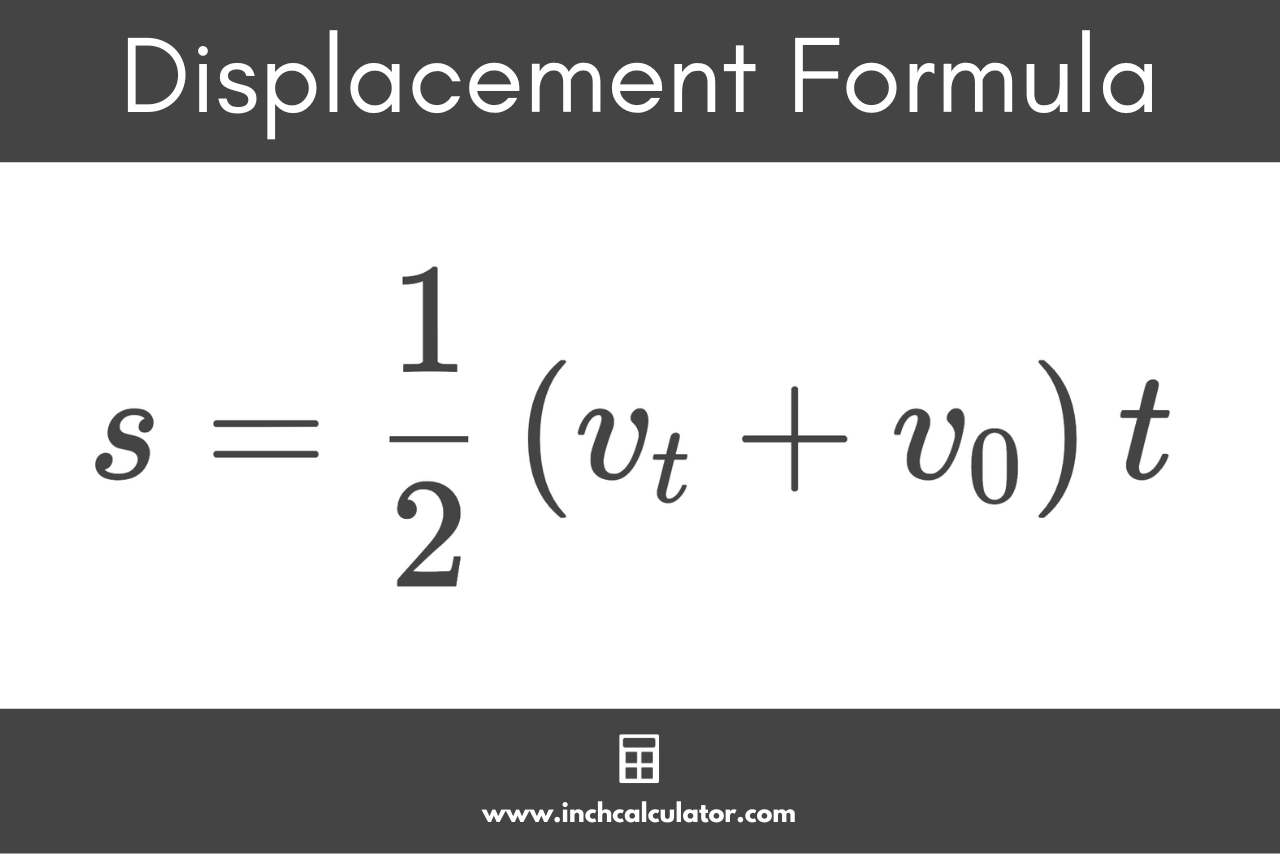Displacement Calculator
Use our displacement calculator to find the displacement, initial velocity, final velocity, or duration of time.
Displacement:
Displacement Formula
Final Velocity Formula
Initial Velocity Formula
Time Formula
On this page:
How to Calculate Displacement
Displacement, in physics, refers to the overall change in the position of an object. It is a vector quantity, meaning it has both magnitude and direction.
You can calculate displacement using a simple formula.
Displacement Formula
The formula for displacement vector s can be expressed as the vector difference between the final position x2 minus and the initial position x1.
If you know the velocity of a moving object, then you can also calculate displacement using the following formula:
Thus, the displacement s is equal to the average velocity times the time duration t. The average velocity can be found by subtracting the initial velocity v0 from the final velocity vt, then dividing the result in half.

Difference Between Displacement and Distance
It is important to note that the displacement is not always equal to the total path length traveled. Instead, it is the shortest distance between the initial and final positions, and it takes into consideration the direction of motion.
Displacement, as mentioned above, considers the starting and ending points of motion and is a vector.
Distance, on the other hand, is a scalar quantity, which means it only concerns the magnitude, not direction. Distance is the total path length traveled by an object, regardless of the direction.
Thus, while the distance can never be negative, displacement can, indicating that the object traveled in opposing directions over a period of time.
For example, if you walked 5 meters forward and then 5 meters backward, your total distance would be 10 meters, but your displacement would be 0 meters.
Frequently Asked Questions
Can displacement be zero even if distance is not?
Yes. Consider the example mentioned above: if you walk 5 meters forward and then 5 meters backward, your total traveled distance is 10 meters, but you end up at your starting point, making your displacement 0 meters.
Is it possible for displacement to be greater than distance?
No. Displacement is the shortest distance between two points, which means it can either be equal to the distance (in cases where the path taken is a straight line) or less than the distance (in cases where the path is curved or zigzag).
If an object moves in a circle and returns to its starting point, what is its displacement?
If an object moves in a complete circle and returns to its starting point, its displacement is 0. This is because displacement takes into account only the initial and final positions, which, in this case, are the same. However, the distance traveled would be the circumference of the circle.


